Best Practices Articles
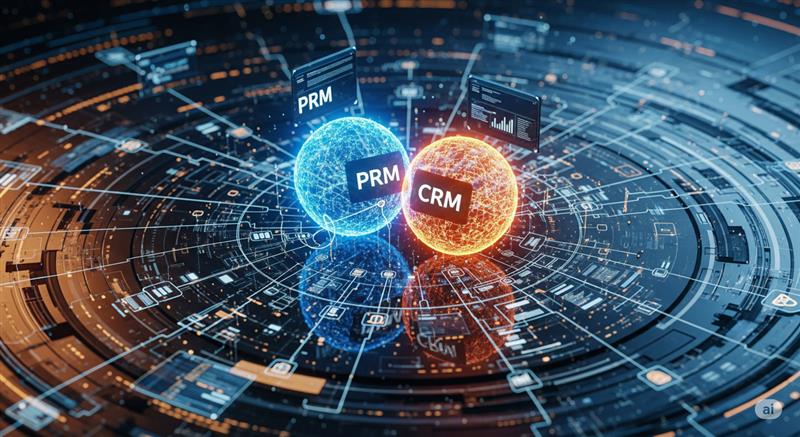
PRM vs. CRM: Understanding the Essential Difference for Channel Growth
What is Partner Relationship Management (PRM)?
Partner Relationship Management (PRM) software helps businesses manage and improve their relationships with indirect sales partners, such as resellers and distributors. Think of it as a special tool designed to help companies work better with other businesses that sell their products or services to the final customers. This is different from how a company directly sells to a customer.
The Importance of PRM for Business Growth
Many businesses today don't just sell directly to customers. They also work with partners who help sell their products. These partners could be resellers, distributors, referral agents, or strategic alliances. To grow, these businesses need to have strong relationships with these partners. This is where PRM comes in. It helps companies recruit new partners, set them up, provide them with the right tools, and even help them with marketing.
How PRM Works: Key Features
PRM systems offer several essential features to help manage these partner relationships:
- Finding and Welcoming Partners: PRM helps businesses find new partners and get them started, including managing applications and contracts. It also helps new partners learn the ropes through automated onboarding programs.
- Partner Portal: Imagine a special online hub just for partners. This portal gives them access to everything they need, like sales materials, product information, and training.
- Helping Partners Sell: PRM provides partners with sales tools like content libraries and sales guides. It also allows partners to register potential sales deals, ensuring everyone gets credit for their work and avoiding conflicts.
- Marketing Support for Partners: PRM helps partners create their marketing materials, often allowing them to add logos to existing campaigns. It can even provide pre-built marketing campaigns for partners to use. PRM also streamlines the request, approval, and tracking of marketing funds allocated to partners.
- Training and Learning: PRM systems include structured training modules, webinars, and certification programs to make sure partners are knowledgeable and skilled in selling and supporting your offerings. It also tracks partner progress and certifications.
- Rewarding Partners: PRM automates the calculation and distribution of commissions, rebates, SPIFFs, and other incentives based on partner performance. It also provides transparent dashboards for partners to track their earnings.
- Tracking Partner Performance: Businesses use PRM to track partner-sourced revenue, deal velocity, engagement levels, training completion, and other key performance indicators (KPIs). This helps channel managers monitor and optimize partner performance.
- Communication Hub: PRM provides centralized announcement boards, secure messaging, forums, and integrated support ticketing to facilitate seamless communication between vendors and partners.
PRM in Action: Real-World Examples
- A new reseller uses the PRM portal to complete onboarding training and get certified on your latest product.
- A channel manager uses the PRM to distribute a new marketing campaign to all Gold-tier European partners.
- A partner logs a new lead in the PRM, automatically checking for conflicts and routing it for approval.
- The finance team uses the PRM to automate the calculation and payout of quarterly rebates to distributors.
PRM vs. CRM: Why You Need Both
While PRM focuses on partners, another essential system, Customer Relationship Management (CRM), focuses on direct relationships with end customers. PRM and CRM deal with "relationships" and aim to increase revenue. However, they serve different purposes.
Consider it this way: CRM helps a company manage its direct conversations and sales with customers. PRM, on the other hand, helps a company manage its relationships with other businesses that sell its products to those customers.
- CRM's Focus: Managing direct relationships with end-customers, improving customer satisfaction customer retention, and driving direct sales and lifetime value.
- PRM's Focus: Managing relationships with external channel partners, maximizing partner engagement, enablement, productivity, indirect sales, and channel ROI.
Trying to manage partners using only a CRM is a critical mistake for businesses that rely on indirect channels. A CRM lacks the specialized functionalities required to operate a partner ecosystem at scale effectively. This often leads to inefficient workarounds, limited partner engagement, poor visibility into partner performance, increased channel conflict, and suboptimal channel ROI.
What is CRM?
Customer Relationship Management (CRM) software manages and analyzes customer interactions and data throughout the customer lifecycle. Its primary purpose is to improve customer relationships, increase customer retention, and drive sales growth. CRM systems consolidate customer information from various touchpoints, creating a unified view of each customer.
Key Functionalities of a CRM System:
- Sales Automation includes capturing, tracking, and nurturing leads from initial contact through qualification (Lead Management). It also involves managing sales opportunities, tracking deal stages, forecasting revenue, and assigning tasks to sales reps (Opportunity Management). CRM stores comprehensive information about customers and prospects, including contact details, interaction history, purchase history, and communication preferences (Account & Contact Management). Additionally, it handles generating quotes, processing orders, and tracking billing information (Quote & Order Management).
- Marketing Automation: CRM helps plan, execute, and track marketing campaigns across various channels (Campaign Management). It automates communication sequences to engage and qualify leads over time (Lead Nurturing). CRM allows for segmenting customer databases for targeted messaging and delivering personalized content (Segmentation & Personalization). It also measures campaign performance, ROI, and customer engagement (Marketing Analytics).
- Customer Service & Support: CRM tracks and resolves customer inquiries, issues, and support tickets (Case Management). It provides self-service options for customers to find answers to common questions (Knowledge Base). CRM manages and tracks adherence to service commitments (Service Level Agreements - SLAs). It also collects and analyzes customer feedback through surveys and other channels (Customer Feedback).
- Reporting & Analytics: CRM provides dashboards and reports on sales pipeline, marketing campaign effectiveness, customer service metrics, and overall customer health. This data helps forecast, identify trends, and optimize customer-facing strategies.
Target Audience of CRM:
Internal teams directly involved in customer interactions primarily use CRM systems, such as:
- Direct Sales Teams
- Marketing Teams
- Customer Service & Support Teams
- Sales Operations & Revenue Operations (RevOps)
- A sales rep uses CRM to log calls with a prospect, update deal stages, and forecast their quarterly revenue.
- A marketing team uses CRM to segment its customer base for a targeted email campaign about a new product.
- A customer service agent uses CRM to access a customer's purchase history and previous support tickets to resolve an issue quickly.
- Sales leadership uses CRM dashboards to monitor team performance and identify bottlenecks in the sales process.
CRM optimizes the direct relationship with your end customers, ensuring their satisfaction and maximizing the lifetime value of each customer.
The Power of Integration: CRM and PRM Working Together
The true magic happens when CRM and PRM systems work together seamlessly. This integration creates a robust system that helps businesses grow directly and indirectly.
When CRM and PRM are integrated:- All Data in One Place: Customer and partner data flow freely between systems, eliminating silos and ensuring all teams work from the same accurate, up-to-date information. This provides a holistic view of the entire revenue lifecycle, from partner-generated leads to closed-won customers.
- Smooth Sales Process: The system automatically pushes leads partners generated in the PRM to the CRM for direct sales follow-up or deeper customer record creation. Partner deal registrations flow directly into the CRM's opportunity pipeline, giving direct sales and leadership complete visibility into channel-sourced deals. This prevents conflicts and ensures accurate forecasting.
- Fair Credit and Pay: With integrated data, businesses can accurately attribute revenue and leads to specific partners, even in complex multi-touch or multi-partner deals. This ensures fair compensation and transparent incentive payouts, fostering partner trust.
- Better Marketing and Sales: Marketing teams can leverage customer data from the CRM to create more effective campaigns for partners in the PRM. Sales teams gain visibility into partner activities and can collaborate more effectively on joint opportunities.
- Complete Reports: Businesses combine data from both systems to generate comprehensive reports showing the impact of direct and indirect sales efforts on overall revenue. They understand the true ROI of channel programs alongside direct sales initiatives.
- Improved Experience for Everyone: A seamless internal process, enabled by integration, translates into a better experience for both your end-customers (who receive consistent messaging and support) and your partners (who find it easy to do business with you).
How to Integrate CRM and PRM
Integrating these systems requires careful planning and execution.- Syncing Leads and Opportunities: When a partner registers a lead or deal in the PRM, it automatically creates or updates a corresponding lead/opportunity record in the CRM. The PRM automatically distributes leads the vendor generates (e.g., from website forms and events) to partners.
- Sharing Customer and Partner Information: Customer accounts and contacts from the CRM can be synced to the PRM to provide partners with relevant customer data for their sales efforts. The system can sync partner contact information from the PRM to the CRM for internal account management.
- Product Information: Product information (SKUs, pricing, descriptions) from the CRM or ERP can be synced to the PRM to ensure partners can access the latest product details for quoting and selling.
- Sales Activity Tracking: Partner sales activities (e.g., deal updates, customer interactions) logged in the PRM can be pushed to the CRM to provide a complete view of the customer relationship.
- Combined Reports: You can aggregate key performance data from the PRM (e.g., partner-sourced revenue, MDF utilization) with CRM data for holistic business intelligence and reporting.
Best Practices for PRM Integration:
- Clearly Define Data Ownership: Determine which system is the "master" for specific data points to avoid conflicts and ensure data integrity.
- Map Data Carefully: Meticulously map all relevant data fields between the two systems to ensure accurate and consistent data transfer.
- Prioritize Real-time Syncing: For critical data like leads and opportunities, real-time or near real-time synchronization is essential to prevent conflicts and ensure timely follow-up.
- Use Existing Tools: Utilize pre-built connectors offered by vendors first. Use robust APIs for reliable and scalable connections if custom integration is needed.
- Test Thoroughly: Perform extensive testing of all integration points to ensure data flows correctly and workflows remain undisrupted.
- Plan for Ongoing Maintenance: Integrations are not "set it and forget it." Plan for ongoing monitoring, maintenance, and updates as both systems evolve.
- Involve Everyone: Ensure the IT, channel, sales, and marketing teams participate in the integration planning and execution to meet their needs.
Choosing the Right Solutions
When selecting CRM and PRM software, consider them interconnected parts of a larger ecosystem.
- For CRM, focus on your direct sales, marketing, and customer service needs. Evaluate scalability, integration capabilities, and user adoption for your internal teams—leading CRMs like Salesforce, HubSpot, and Microsoft Dynamics 365 offer comprehensive solutions.
- For PRM, prioritize features directly addressing your channel management challenges, such as robust partner onboarding, flexible incentive management, comprehensive marketing enablement (TCMA), and powerful analytics. Look for a PRM that offers strong integration with your chosen CRM. Some vendors, like Salesforce, offer PRM capabilities as an extension of their CRM platform (e.g., Salesforce Experience Cloud). This can be a compelling option if you are deeply embedded in that ecosystem. Other vendors, like ZINFI, offer comprehensive Unified Partner Management (UPM) platforms that include a full suite of PRM functionalities that integrate seamlessly with various CRMs, providing a specialized, best-of-breed solution for channel operations.
The key is to select systems that are powerful in their own right and designed to work together harmoniously, creating a cohesive and efficient revenue engine.
The ZINFI PartnerOps Framework: Unifying Growth
ZINFI's PartnerOps Framework provides a holistic approach to managing revenue operations by integrating direct and indirect sales strategies. This framework emphasizes that a robust PRM, seamlessly integrated with a strong CRM, is fundamental to achieving predictable and scalable growth across both channels.
The PartnerOps Framework outlines eight pillars: Strategize, Recruit, Onboard, Enable, Co-Market, Co-Sell, Incentivize, and Accelerate. A well-integrated CRM and PRM system supports these pillars by:
- Strategize: Both systems provide market analysis and goal-setting data, allowing for aligned direct and indirect strategies.
- Recruit: PRM handles partner recruitment, while CRM can feed insights on customer demographics that might attract specific partners.
- Onboard: PRM streamlines partner onboarding and training.
- Enable: PRM provides partners with sales and marketing tools, while CRM ensures direct sales have visibility into partner activities.
- Co-Market: PRM enables partners to execute marketing campaigns, with leads flowing into CRM.
- Co-Sell: PRM manages partner deal registration, with opportunities syncing to CRM for joint pipeline management.
- Incentivize: PRM automates partner incentives, with performance data potentially influencing direct sales compensation models.
- Accelerate: Analytics from both PRM and CRM are combined to provide a comprehensive view of revenue performance and identify areas for acceleration across all channels.
This unified approach ensures that your direct and indirect sales efforts are complementary and optimized for maximum overall business impact.
Conclusion
In the intricate dance of modern business, direct customer relationships and indirect partner ecosystems are pivotal in driving revenue and market expansion. Customer Relationship Management (CRM) software is indispensable for nurturing your direct customer base, optimizing sales processes, and enhancing customer satisfaction. Partner Relationship Management (PRM) software, on the other hand, is the specialized engine for building, enabling, and scaling your indirect sales channels, maximizing partner productivity and loyalty.
While their core focuses are distinct, CRM and PRM are not competitors. Instead, they are powerful allies. The true magic happens when you integrate these two systems seamlessly, creating a unified data landscape that provides unparalleled visibility into your entire revenue pipeline. This integration eliminates data silos, prevents channel conflict, ensures accurate attribution, and empowers your organization to make data-driven decisions that optimize both direct and indirect sales efforts.
For any business serious about comprehensive, scalable growth, the question is no longer "CRM or PRM?" but rather, "How can we best integrate CRM and PRM to unlock our full revenue potential?". By understanding their unique strengths and leveraging their combined power, you can build a cohesive, efficient, and highly effective revenue operations strategy that drives success across all your sales channels.
Best Practices Guidebook
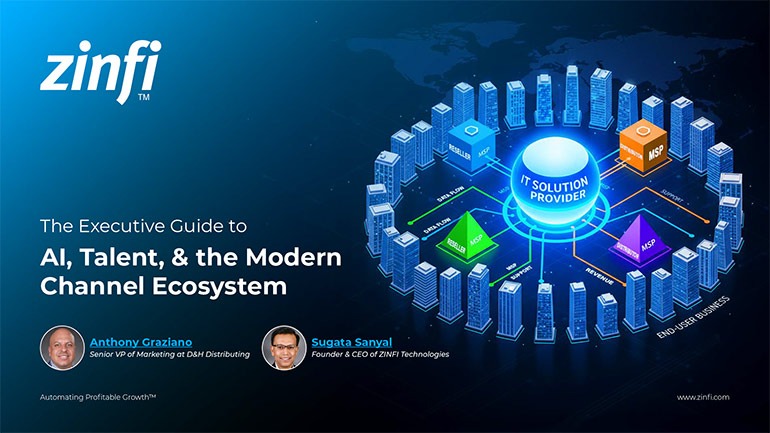 Modernizing Channel Marketing: AI and Ecosystem Enablement Best Practices
Modernizing Channel Marketing: AI and Ecosystem Enablement Best PracticesDownload for FREE
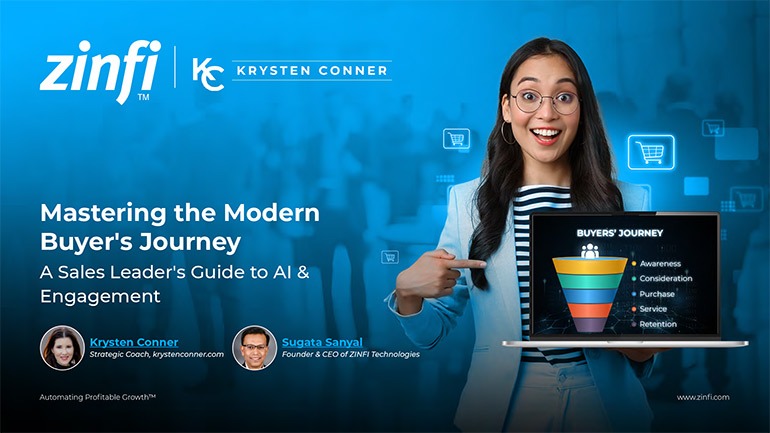 The Channel’s Shift to Partner-Led With AI Best Practices
The Channel’s Shift to Partner-Led With AI Best PracticesDownload for FREE
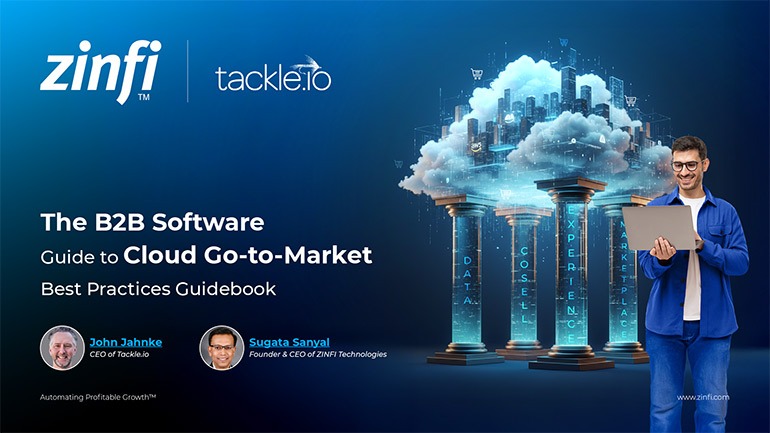 Hyperscalers, ISVs, and AI: Shaping the Future of B2B Software Distribution
Hyperscalers, ISVs, and AI: Shaping the Future of B2B Software DistributionDownload for FREE
 Definitive Guide to a Partner Ecosystem-First Sales Strategy
Definitive Guide to a Partner Ecosystem-First Sales StrategyDownload for FREE
 The Partner-Led Digital and AI Transformation Best Practices
The Partner-Led Digital and AI Transformation Best PracticesDownload for FREE
 Startup Talent Recruitment: Hiring Missionaries, Not Mercenaries
Startup Talent Recruitment: Hiring Missionaries, Not MercenariesDownload for FREE
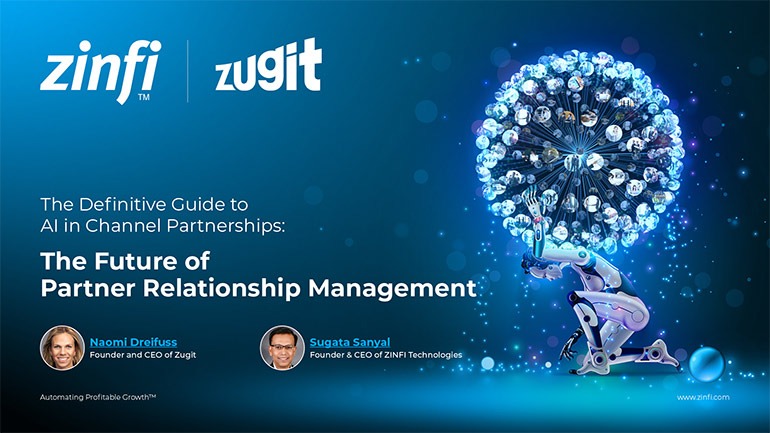 The Future of Partner Relationship Management with AI in Partnerships
The Future of Partner Relationship Management with AI in PartnershipsDownload for FREE
 Cybersecurity for the 99%: Strategies from the Frontline
Cybersecurity for the 99%: Strategies from the FrontlineDownload for FREE
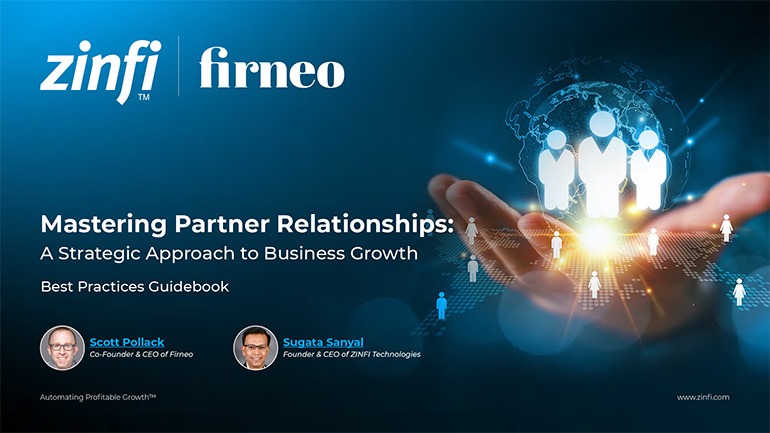 Mastering Partner Relationships: A Strategic Approach to Business Growth
Mastering Partner Relationships: A Strategic Approach to Business GrowthDownload for FREE
 Mastering Partner Relationship Management: Keys to SaaS Channel Success
Mastering Partner Relationship Management: Keys to SaaS Channel SuccessDownload for FREE
 Navigating the AI Revolution: Guide for Partners in the Microsoft Ecosystem
Navigating the AI Revolution: Guide for Partners in the Microsoft EcosystemDownload for FREE
 Mastering the Modern Buyers Journey: Sales Leader’s Guide to AI & Engagement
Mastering the Modern Buyers Journey: Sales Leader’s Guide to AI & EngagementDownload for FREE










